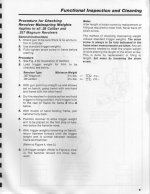MT2AShooter
Member
I just finished my third trigger job on Smith revolvers. They were done on a 15-3, a 624, and a 27-4. So far, so good. All guns go bang and both single and double action pulls were improved without compromising function. My primary sources were Jerry Miculek's trigger job video, which was helpful, and Kuhnhausen's shop manual.
In addition to very conservatively stoning and polishing the parts referenced in Jerry's video, I've been installing Wilson's mainsprings and 13 lb rebound springs. SA pulls run at or just below 3 lbs and DA somewhere above 8 lbs. Despite some success, I've seen double action triggers that were better than mine, so I know there's room for improvement.
Here are my questions:
1. Are there better spring kits than Wilson's?
2. Has anyone used a Power Custom stoning jig? If so, what's your assessment? Which version did you use?
3. Aside from what I've already done, are there any improvements to make or problems to eliminate that enhance performance without compromising reliability or safety?
4. What other sources of information have you used?
5. What other questions should I be asking?
In addition to very conservatively stoning and polishing the parts referenced in Jerry's video, I've been installing Wilson's mainsprings and 13 lb rebound springs. SA pulls run at or just below 3 lbs and DA somewhere above 8 lbs. Despite some success, I've seen double action triggers that were better than mine, so I know there's room for improvement.
Here are my questions:
1. Are there better spring kits than Wilson's?
2. Has anyone used a Power Custom stoning jig? If so, what's your assessment? Which version did you use?
3. Aside from what I've already done, are there any improvements to make or problems to eliminate that enhance performance without compromising reliability or safety?
4. What other sources of information have you used?
5. What other questions should I be asking?


